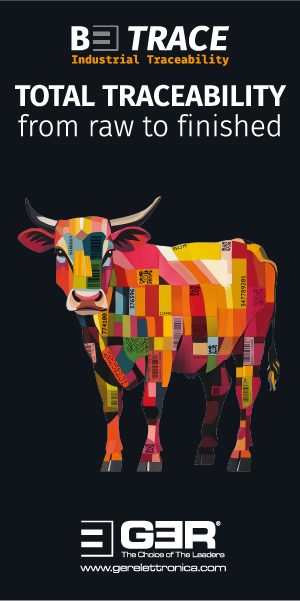Luxury market now worth €1.5 trillion

Resilience, relevance and renewal will be the key themes for luxury brands as they look for growth in 2024 and beyond, according to one of the most in-the-know commentators.
There is no denying the bumpiness of the road in 2023, with geopolitical tensions and cost-of-living crises in the news all the time, but rumours of the death of luxury spending are greatly exaggerated, according to Claudia d’Arpizio. “Yes, sales in some sectors, including real estate and personal luxury goods, have slowed down, with some markets suffering more than others,” the specialist luxury business analyst and senior partner at consultancy firm Bain & Company says. “But these sectors have still shown themselves to be solid performers in 2023.”
This year, as usual, Ms d’Arpizio and her colleague Federica Levato have worked on behalf of the company with Altagamma, the business association that promotes luxury brands producing in Italy, to compile a report called the Altagamma-Bain Worldwide Luxury Market Monitor 2023. The report calculates that the global personal luxury goods market will reach total sales for 2023 of more than €360 billion, which represents growth of 4% compared to the figure for 2022.
This segment, which includes the high-end shoes and handbags that luxury leathergoods brands make and sell, is only one component of the wider global luxury market that Altagamma and Bain calculate to be worth €1.5 trillion now. Areas of spending that contribute to this enormous total also include luxury cars, yachts and private jets. Works of art, design projects and experiences such as fine dining, cruises and luxury hotel stays are also in the mix. All of this is of interest to the leather industry, too, because cars, boats, objets d’art, aircraft, design projects, high-end restaurants and luxury hotels can all be important consumers of leather.
Rich experience
“Growth in spending on luxury experiences has grown disproportionately this year,” Ms d’Arpizio observes. “Clearly, this is a demonstration of the return of sociability, taking us out of our homes again following covid-19. During the pandemic, people spent more money on products because experiences were banned.” the consultancy has calculated that wealthy people across the world saved something like €3 trillion during the covid years in the form of money that they would have spent if they had been able to.
Now, spending on cruises has gone up by more than 100% to reach around €4 billion, the new report says, while the amount of consumer spending on luxury hospitality will grow by around 15% year on year to reach more than $200 billion in 2023. “There are so many new luxury hotels opening at the moment,” the Bain senior partner says, “and not only in the Middle East and elsewhere in Asia. New hotels are opening in America and in European capitals, too. And prices have shot up. Last year, the price of these hotel rooms almost doubled. This year, 2023, prices have stabilised, but the cost of a room in these hotels is twice the pre-covid amount.”
One knock-on effect is that growth in sectors that did particularly well when people had no choice but to stay at home has slowed now. Sales of high-quality furniture will be flat in 2023 at around €50 billion, while the value of sales of fine art may rise by 2% to around €40 billion.
Regional differences
In terms of geography, she says the €1.5 trillion in spending is spread “across three macro-blocks”: the Americas, Europe and Asia, but suggests it would be a mistake to regard them as uniform. There are differences from region to region and there are differences among what she calculates to be four or even five different generations of people who spend money in the luxury market now. She explains: “Just to give one example, America is a mature market and a lot of wealth there is now in the hands of people over the age of 65, people from the Baby Boom generation. Essentially, they want to spend more on experiences than on products. At the same time, younger people there are distancing themselves from some aspirational product categories, such as luxury cars. In contrast, these cars remain objects of desire in Asia.”
According to Bain & Company-Altagamma calculations, Asia’s share of the total global luxury spend of €1.5 trillion is the biggest at €560 billion, followed by €450 billion for Europe and €430 billion for the Americas. But this does not paint a complete picture either. Numerically, Asia may be the part of the world where the number of wealthy consumers is growing the fastest, but America is certainly the place with what she calls the greatest “preponderance of wealthy people”.
Reasons for reluctance
Across the board, she says wealthy consumers are now spending a large chunk of the trillions of euros they were forced to save in covid-19 times, but may still be holding onto around 20% of the €3 trillion because of what she refers to as inertia. But there is another factor. In Claudia d’Arpizio’s opinion, doubts about the future also have a big impact on spending. “Consumer confidence is the fundamental driver of the luxury business,” she explains. “Part of this is about economics, the stock market and so on, but it has a lot to do with socio-political turbulence too, and here we are with wars making headlines every day.”
She points out that the conflicts are having an immediate effect on markets that are, or at least have been, important for luxury brands. Meanwhile, fears of escalation also affect consumers, for example by discouraging shopping tourist trips to Europe. “This affects people’s willingness to live life to the full,” the analyst continues.
Greater insecurity around employment is a factor as well. She points out that consumers in China who now fear for their jobs cannot possibly maintain the same enthusiasm for expensive items, including shoes and bags, that they have shown for the last ten years, when income and spending power seemed to increase year upon year.
Three key attributes
In spite of everything, the consultancy believes steady growth will return. Spending on personal luxury goods is now three times larger than it was at the start of the century, despite the dot-com bubble bursting, the 2008-2009 financial crash and covid-19. Ms d’Arpizio’s conviction is that luxury brands can continue to do well in the years ahead; Bain & Company foresees annual growth of between 5% and 7% between now and 2030, when the size of the global personal luxury items market will be between €540 billion and €580 billion per year. Few consumer-facing sectors will be able to contemplate what remains of the 2020s with the same level of optimism, she suggests.
The companies that achieve the highest growth will be the ones that best exemplify three key attributes, which she identifies as resilience, relevance and renewal. “Resilience speaks for itself,” she explains. “But there is more to relevance than sales revenues. It is also about how important brands are to luxury consumers and how big a role brands play in consumers’ lives, across all touchpoints. Will the consumer pass up the chance to go to the Maldives to be able to spend the same money on one of your products? It depends on how relevant your brand is to that consumer.”
Renewing their product offering well will help brands maintain and even increase their relevance to customers and bring new customers on board. But they need to be resilient to achieve this. This is a market of few overnight successes.
Bentley’s Flying Spur Mulliner debuts at the Guangzhou Motor Show. Luxury cars remains objects of desire in Asia.
Credit: Bentley Motors






























